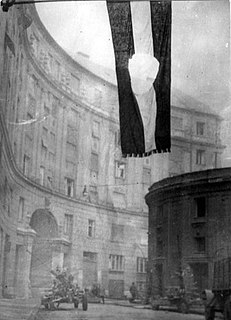
The Hungarian Revolution of 1956, or the Hungarian Uprising, was a nationwide revolution against the Hungarian People's Republic and its Soviet-imposed policies, lasting from 23 October until 10 November 1956. Leaderless at the beginning, it was the first major threat to Soviet control since the Red Army drove Nazi Germany from its territory at the End of World War II in Europe.

The Hungarian Working People's Party was the ruling communist party of Hungary from 1948 to 1956. It was formed by a merger of the Hungarian Communist Party (MKP) and the Hungarian Social Democratic Party. Ostensibly a union of equals, the merger had actually occurred as a result of massive pressure brought to bear on the Social Democrats by both the Hungarian Communists, as well as the Soviet Union. The few independent-minded Social Democrats who had not been sidelined by Communist salami tactics were pushed out in short order after the merger, leaving the party as essentially the MKP under a new name.

János Kádár was a Hungarian communist leader and the General Secretary of the Hungarian Socialist Workers' Party, presiding over the country from 1956 until his retirement in 1988. His 32-year term as General Secretary covered most of the period the People's Republic of Hungary existed. Due to Kádár's age, declining health and declining political mastery, he retired as General Secretary of the party in 1988 and a younger generation consisting mostly of reformers took over.
The term fellow traveller identifies a person who is intellectually sympathetic to the ideology of a political organization, and who co-operates in the organization's politics, without being a formal member of that organization. In the early history of the Soviet Union, the Bolshevik revolutionary Trotsky coined the term poputchik to identify the vacillating intellectual supporters of the Bolshevik government. It was the political characterisation of the Russian intelligentsiya who were philosophically sympathetic to the political, social, and economic goals of the Russian Revolution of 1917, but who chose to not join the Communist Party of the Soviet Union. The usage of the term poputchik disappeared from political discourse in the Soviet Union during the Stalinist régime, but the Western world adopted the English term fellow traveller to identify people who sympathised with the Soviets and with Communism.
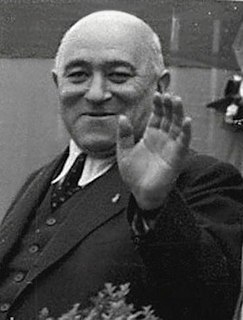
Mátyás Rákosi[ˈmaːcaːʃ ˈraːkoʃi] was a Hungarian communist politician. He was born Mátyás Rosenfeld in Ada. Rákosi was the leader of Hungary's communist party from 1945 to 1956 — first as General Secretary of the Hungarian Communist Party (1945–48) and later holding the same post with the Hungarian Working People's Party (1948–56). As such, from 1947–56, he was the de facto ruler of Communist-ruled Hungary.
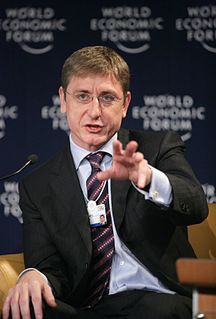
Ferenc Gyurcsány is a Hungarian entrepreneur and politician. He was Prime Minister of Hungary from 2004 to 2009. Prior to that, he served as Minister of Youth Affairs and Sports between 2003 and 2004.
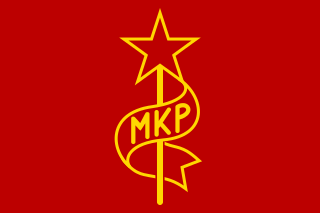
The Party of Communists in Hungary, renamed Hungarian Communist Party in October 1944, was founded on November 24, 1918, and was in power in Hungary briefly from March to August 1919 under Béla Kun and the Hungarian Soviet Republic. The communist government was overthrown by the Romanian Army and driven underground. The party regained power following World War II and held power from 1945 under the leadership of Mátyás Rákosi. In 1948 the party was merged with the Social Democratic Party of Hungary to become the Hungarian Working People's Party. The Communist Party of Hungary was a member of the Communist International.
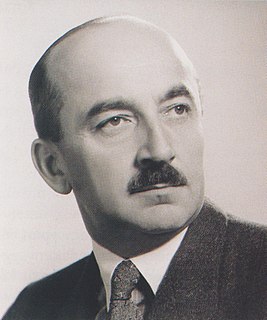
Ferenc Nagy was a Hungarian politician of the Smallholders Party who served as Prime Minister of Hungary from 1946 until his forced resignation in 1947. He was also a Speaker of the National Assembly of Hungary and a member of the High National Council from 1945 to 1946. Nagy was the second democratically elected prime minister of Hungary, and would be the last until 1990 not to be a Communist or fellow traveler. The subsequent Hungarian prime minister Imre Nagy was unrelated to him.

The Independent Smallholders, Agrarian Workers and Civic Party, known mostly by its acronym FKgP or its shortened form Independent Smallholders' Party, is a political party in Hungary. Since the 2002 parliamentary elections, the party has won no seats.

The Hungarian People's Republic was a one-party socialist republic from 20 August 1949 to 23 October 1989. It was governed by the Hungarian Socialist Workers' Party, which was under the influence of the Soviet Union. Pursuant to the 1944 Moscow Conference, Winston Churchill and Joseph Stalin had agreed that after the war Hungary was to be included in the Soviet sphere of influence. The HPR remained in existence until 1989, when opposition forces brought the end of communism in Hungary.

Hungarian–Soviet relations were characterized by political, economic, and cultural interventions by the Soviet Union in internal Hungarian politics for 45 years, the length of the Cold War. Hungary became a member of the Warsaw Pact in 1955; since the end of World War II, Russian troops were stationed in the country, intervening at the time of the Hungarian Revolution of 1956. Starting in March 1990, the Soviet Army began leaving Hungary, with the last troops being withdrawn on June 19, 1991.

Parliamentary elections were held in Hungary on 4 November 1945. They came at a turbulent moment in the country's history: World War II had had a devastating impact; the Soviet Union was occupying it, with the Hungarian Communist Party growing in numbers; a land reform that March had radically altered the property structure; and inflation was rampant. The Independent Smallholders Party won a sweeping victory, but its gains were gradually whittled away by Communist salami tactics, fulfilling the prediction of their leader Mátyás Rákosi that the defeat would "not play an important role in Communist plans".
Parliamentary elections, which later became infamously the "blue-ballot" elections, were held in Hungary on 31 August 1947. The Hungarian Communist Party, which had lost the previous election, consolidated its power in the interim using salami tactics. Communist-led political intrigues had deprived their opposition of its democratically won mandate from 1945, as numerous prominent anti-Communists were removed from office on charges of conspiracy. These conspiracies reached a climax in late May 1947, when the Hungarian Communist Party deposed the democratically elected prime minister Ferenc Nagy in a coup d'état, removing one of the strongest opponents to their rule and crippling the opposition. This weakening of the opposition, combined with a revised electoral law, led to further Communist gains.

The Second Hungarian Republic was a parliamentary republic briefly established after the disestablishment of the Kingdom of Hungary on 1 February 1946 and was itself dissolved on 20 August 1949. It was succeeded by the People's Republic of Hungary.
Hungary in its modern (post-1946) borders roughly corresponds to the Great Hungarian Plain . During the Iron Age, it was at the boundary of Celtic, Illyrian and Iranian (Scythian) cultural spheres.
The Eastern Bloc is a collective term for the former Communist countries in Central and Eastern Europe. This generally encompasses the Soviet Union and the countries of the Warsaw Pact.
Iván Boldizsár was a Hungarian journalist, writer and editor of several Hungarian publications, periodicals and newspapers.
Győző Drozdy was a Hungarian teacher, journalist, and politician.
The Hungarian Freedom Party, was a short-lived right-wing political party in Hungary between 1946 and 1947, it strongly opposed the Communist takeover. The party was revived for a short time during the Hungarian Revolution of 1956 and after the end of communism in 1989–90.

China's salami slicing strategy, according to the international community, covers many dimensions including strategical and tactical territorial slicing of neighboring nations, power and control salami slicing strategies, economic, cultural, demographic and tradition slicing strategies. China's salami slice strategy is a widely accepted norm.












